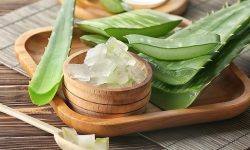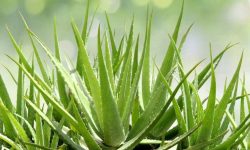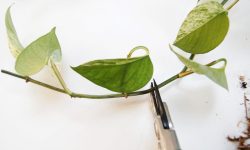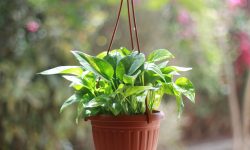Rhododendrons are beloved evergreen shrubs known for their lush green foliage and stunning blooms. Gardeners admire them for their beauty, but many notice an intriguing behavior during the colder months: the leaves droop or curl downward. This phenomenon often causes concern among gardeners who fear their plants may be suffering from disease or stress. However, in most cases, this leaf movement is a natural response to cold weather rather than a sign of damage.
Understanding why rhododendron leaves droop when temperatures drop requires knowledge of the plant’s biology and adaptation strategies. This unique mechanism helps the plant survive winter conditions by reducing water loss and protecting delicate leaf tissues from freezing. Knowing the difference between natural cold response and actual plant stress is essential for proper rhododendron care, ensuring the plant remains healthy year after year.
The Natural Adaptation of Rhododendrons to Cold Temperatures
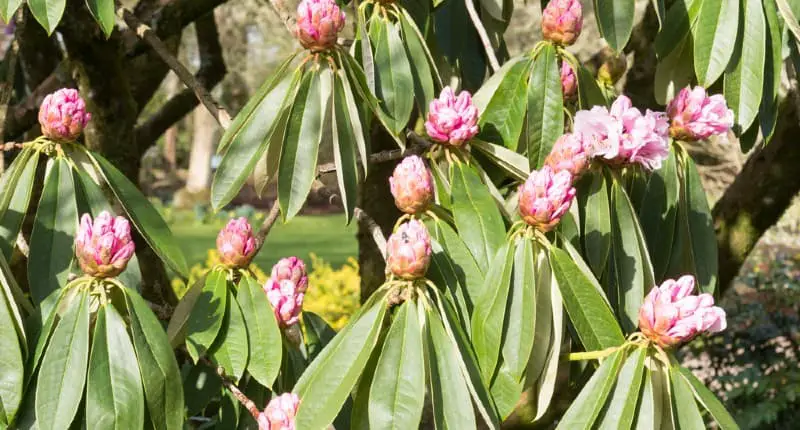
How Rhododendron Leaves Respond to Cold Weather
When temperatures fall, rhododendron leaves exhibit a noticeable change in position, often drooping or curling tightly. This movement is not random but an evolutionary adaptation that helps the plant endure harsh winter conditions. Rhododendrons are evergreen shrubs, which means their leaves remain on the plant throughout the year, even in freezing temperatures. Unlike deciduous plants that shed their leaves to conserve energy, rhododendrons must protect their foliage during cold months to survive.
The leaf drooping response, often referred to as “thermotropic leaf movement,” reduces exposure to cold air and wind. As the leaves droop and curl, their surface area exposed to the freezing air is minimized. This position also prevents excessive moisture loss, which is crucial since frozen soil limits water uptake by the roots during winter. The process is reversible; as temperatures rise, the leaves return to their normal position, signaling that the plant is healthy and functioning as expected.
Physiological Mechanisms Behind Leaf Drooping
The drooping of rhododendron leaves is triggered by changes in leaf cell turgor pressure. When temperatures drop significantly, water inside the leaf cells moves out of the cells to prevent freezing and cellular damage. This loss of water pressure causes the leaves to become limp, leading to the downward drooping or curling appearance.
Additionally, leaf curling helps reduce transpiration, the process by which plants lose water through tiny pores called stomata. In freezing conditions, water availability is limited because roots cannot absorb frozen water from the soil. By curling, the leaves close their stomata more tightly, conserving the limited water supply within the plant. This survival strategy ensures that the rhododendron maintains its internal hydration levels throughout winter.
Why This Behavior Is Beneficial for Survival
The ability to adjust leaf position according to temperature is a remarkable survival strategy for rhododendrons. By reducing their exposed surface area, the leaves are less likely to suffer from windburn, frost damage, or desiccation. This adaptation allows the plant to remain evergreen and photosynthetically active during mild winter days, giving it an advantage over deciduous plants that remain dormant.
Gardeners should recognize that drooping leaves during winter are a positive sign of the plant’s natural adaptation rather than a symptom of poor health. Once the weather warms, the leaves gradually return to their firm, upright position, confirming that the plant has successfully endured the cold.
Differentiating Normal Winter Response from Plant Stress
When Drooping Leaves Are Normal
Most rhododendrons naturally droop their leaves when temperatures fall below freezing. This behavior typically begins when the temperature dips below 40°F (4°C) and becomes more pronounced as it approaches 20°F (-6°C). The leaves may even roll tightly into a cigar-like shape during extreme cold spells. However, as long as the leaves remain green and firm, the plant is healthy.
Once the temperature rises, healthy rhododendron leaves will unfold and regain their usual flat, glossy appearance. This quick recovery indicates that the drooping was purely a temporary response to cold weather and not caused by damage or disease.
Signs of Stress or Damage
While drooping leaves are generally normal in winter, certain signs can indicate stress or injury. If the leaves remain wilted or curled after temperatures have warmed, it may suggest dehydration, root damage, or disease. Brown or scorched leaf edges, brittle leaves, or extensive leaf drop can also point to winter injury.
Winter burn, caused by strong cold winds combined with frozen soil, can damage rhododendron foliage. This occurs when the leaves lose moisture faster than the roots can replace it, leading to dried and discolored foliage. Unlike the natural cold response, which is reversible, winter burn often leaves permanent damage on affected leaves.
Protecting Rhododendrons from Extreme Cold Damage
Providing Adequate Watering Before Frost
Even though rhododendrons reduce water loss by drooping their leaves, they still require sufficient hydration before winter sets in. Ensuring that the soil is adequately moist before the ground freezes helps the plant store enough water to survive cold periods. Deep watering in late autumn, before the first hard frost, strengthens the root system and helps prevent winter dehydration.
Avoid overwatering during cold months, as soggy soil can lead to root rot. Well-drained, acidic soil is essential for rhododendron health, allowing roots to remain strong and resilient throughout winter.
Using Mulch to Protect the Roots
Applying a thick layer of organic mulch around the base of the rhododendron provides insulation for the roots. Mulch helps maintain consistent soil temperature, prevents freezing and thawing cycles, and conserves soil moisture. Pine bark, pine needles, or shredded leaves work well as mulching materials for rhododendrons.
Mulch should be kept a few inches away from the main stem to prevent moisture buildup directly against the bark, which could lead to fungal infections or rot. Refreshing the mulch layer annually keeps the roots protected during harsh winters.
Creating Windbreaks for Exposed Plants
Rhododendrons planted in windy, exposed locations are more prone to winter damage, even if leaf drooping is a natural response. Harsh winter winds can increase moisture loss and cause leaf scorch. Providing windbreaks, such as burlap screens or temporary fencing, shields the plants from direct wind exposure.
Positioning rhododendrons near buildings or other evergreen shrubs also offers natural protection against strong winter winds. In severe climates, wrapping the plant with breathable burlap can prevent excessive leaf desiccation.
Choosing Cold-Hardy Varieties
For gardeners in colder regions, selecting rhododendron varieties specifically bred for cold hardiness is crucial. Some rhododendron species tolerate temperatures as low as -25°F (-31°C), while others are better suited for milder climates. Consulting local nurseries or horticultural experts ensures you choose varieties best suited to your climate, reducing the risk of cold damage.
Helping Rhododendrons Recover After Winter
Assessing Plant Health in Early Spring
As temperatures rise, monitor your rhododendron closely for signs of recovery. Healthy leaves will gradually return to their normal position, becoming flat and glossy again. If some leaves remain discolored or wilted, prune them carefully to encourage new growth.
Inspecting the branches for flexibility is also important. Bend them gently; if they are pliable and green inside, the plant is alive and healthy. Brittle, brown branches indicate dead wood and should be removed to stimulate healthy regrowth.
Pruning Damaged Leaves and Branches
Pruning damaged or winter-burned leaves helps the plant direct its energy toward producing new, healthy foliage. Early spring is the best time for pruning, just before new growth begins. Use clean, sharp pruning shears to remove only the affected parts, leaving healthy buds intact.
Avoid heavy pruning in late winter, as this can stimulate premature growth vulnerable to late frosts. Light, selective pruning ensures the plant remains strong and aesthetically pleasing.
Fertilizing to Support New Growth
Once the danger of frost has passed, applying a slow-release, acid-loving fertilizer helps rhododendrons recover quickly from winter stress. Fertilizers rich in nitrogen, phosphorus, and potassium encourage strong root development and vibrant new foliage. Organic options such as composted manure or cottonseed meal improve soil structure while providing essential nutrients.
Watering after fertilizing ensures nutrients reach the root zone effectively. Consistent moisture during the growing season supports lush, green leaves and abundant flowering.
Long-Term Care for Healthy Rhododendrons Year-Round
Maintaining Proper Soil Conditions
Healthy rhododendrons thrive in acidic, well-drained soil rich in organic matter. Testing the soil pH annually ensures it remains between 4.5 and 6.0, ideal for nutrient absorption. Amending the soil with organic compost or peat moss improves drainage and boosts soil fertility, supporting healthy leaf and root development.
Consistent mulching also contributes to soil health by retaining moisture, moderating temperature fluctuations, and suppressing weeds. Avoid compacted or heavy clay soils, as poor drainage can lead to root problems that worsen winter stress.
Ensuring Correct Sunlight Exposure
Rhododendrons prefer partial shade, especially in regions with harsh winters or hot summers. Too much direct sunlight in winter can increase water loss from the leaves, making them more prone to winter burn. Planting rhododendrons in locations with morning sun and afternoon shade provides ideal growing conditions year-round.
In colder regions, some exposure to winter sun is beneficial for photosynthesis on mild days, but strong midday sun should be avoided to prevent leaf scorching.
Monitoring for Pests and Diseases
Although cold temperatures reduce pest activity, keeping an eye out for insect infestations or fungal diseases is important throughout the year. Healthy rhododendrons are more resilient to cold stress, so regular inspection and maintenance are crucial. Addressing pest problems early, maintaining proper air circulation, and avoiding overhead watering help prevent common rhododendron diseases.
FAQs About Rhododendron Leaves Drooping in Cold Weather
Why do rhododendron leaves droop in winter?
Rhododendron leaves droop in winter as a natural response to cold temperatures. This adaptation reduces water loss and protects leaf tissues from freezing damage, helping the plant survive harsh winter conditions.
Will drooping rhododendron leaves recover when it warms up?
Yes, healthy rhododendron leaves recover quickly once temperatures rise. As soon as the weather warms, the leaves uncurl and return to their flat, glossy appearance, showing that the plant is healthy.
How cold does it need to be for rhododendron leaves to droop?
Rhododendron leaves begin to droop when temperatures fall below 40°F (4°C). The drooping becomes more noticeable below 20°F (-6°C) as the plant reduces water loss to survive freezing conditions.
Are drooping rhododendron leaves a sign of stress?
Drooping leaves in cold weather are usually normal, but if leaves remain curled or brown after temperatures warm, it may indicate winter burn, dehydration, or root damage that needs attention.
How can I protect rhododendrons from winter damage?
Mulching, deep watering before frost, and using windbreaks help protect rhododendrons from winter damage. Choosing cold-hardy varieties also reduces the risk of severe leaf injury during extreme cold.
Final Thoughts
Rhododendron leaves drooping when it gets cold is a fascinating example of plant adaptation. This natural response helps the shrub survive freezing temperatures by reducing water loss and protecting its leaves from damage. Gardeners should recognize this behavior as a sign of the plant’s resilience rather than a cause for concern.
By understanding the difference between normal cold responses and true stress symptoms, you can provide the best care for your rhododendrons throughout winter. With proper watering, mulching, wind protection, and post-winter recovery practices, these stunning shrubs will remain healthy, vibrant, and ready to produce beautiful blooms every spring.

